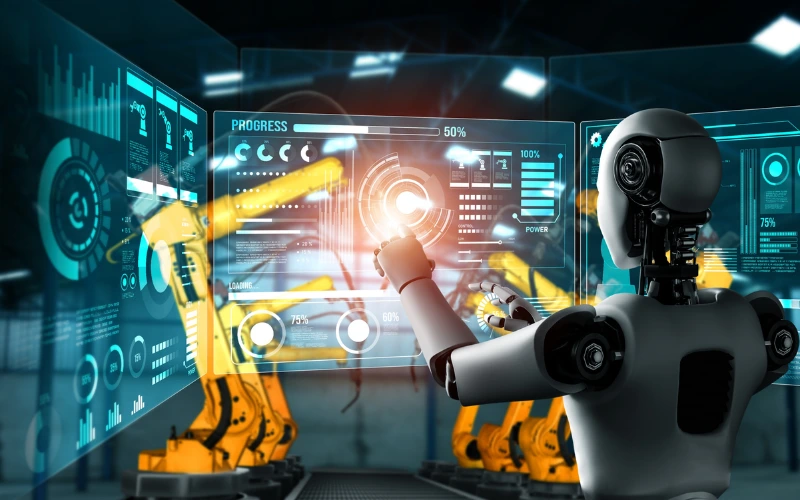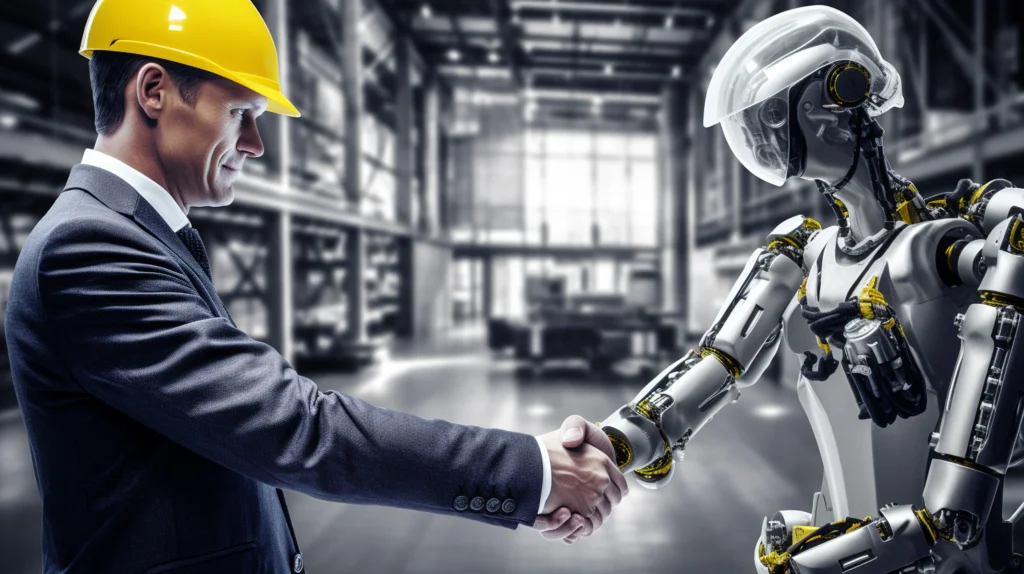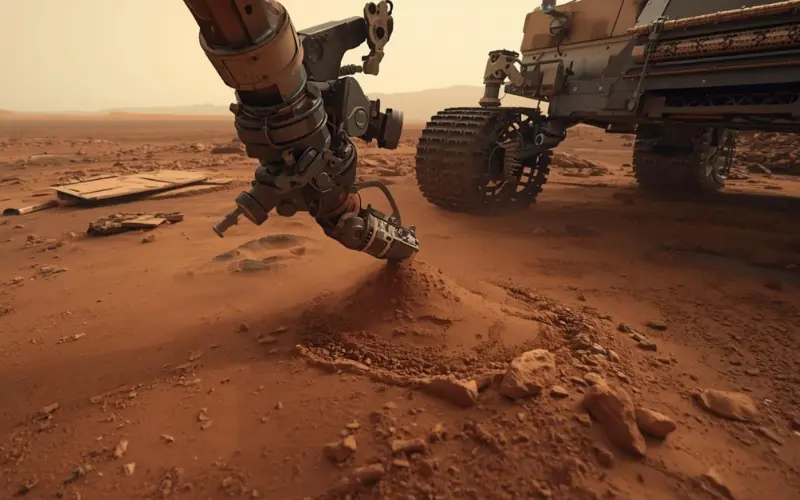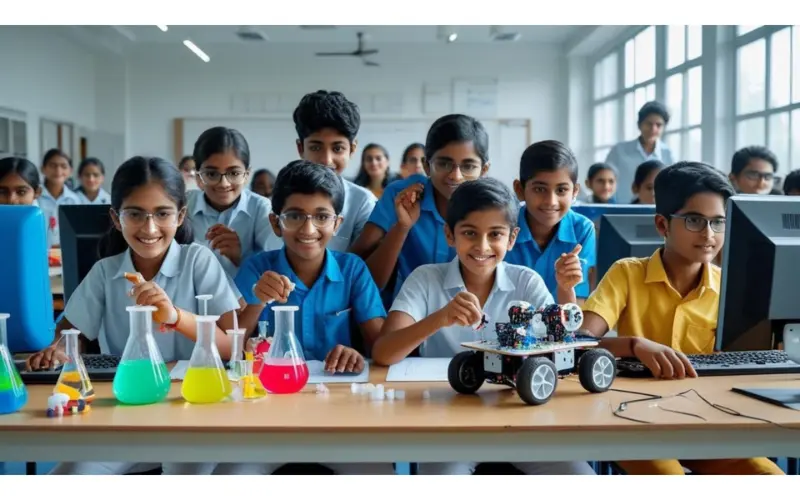

The twenty-first century is commonly referred to as the “age of intelligence” — not due to the fact that human beings have suddenly grown intelligent, but simply because machines have. From factory robots putting together automobiles to AI-driven assistants controlling supply chains, new patterns in robotics and automation are reshaping every aspect of human enterprise. What was previously science fiction is today’s everyday reality. Robots are no longer mere tools; they are partners, decision-makers, and even creators.
We are witnessing an algorithm-driven, sensor-empowered, mechanized industrial revolution. But this revolution, unlike all others, doesn’t depend on the substitution of muscle power — it’s redrawing the map of mental power. With robotic automation and robotics advancing, the discussion is now moving from “Can robots do it?” to “Should robots do it — and how far should we allow them to go?”
For many years, robots were limited to factory floors, with repetitive pre-programmed duties. Now, they have become intelligent systems that can perceive, reason, and adapt. Advanced sensors and machine learning have transformed them from humans’ mechanical extensions to ones that can understand and react to complex environments.
Consider healthcare. Robotic surgeons such as the da Vinci Surgical System can conduct operations with accuracy exceeding human stability. In elderly care, social robots like ElliQ and Pepper are assisting in alleviating loneliness among the elderly. At the same time, in agriculture, autonomous drones track the health of crops, and robot harvesters labor around the clock without tiring.
This movement towards smart robots is not so much about productivity. It’s about augmentation. Rather than displacing people, robots more and more enhance human capabilities. Collaborative robots, or “cobots,” that are made to work with humans in a safe environment are now commonplace in the manufacturing sector. They can detect human presence, regulate force, and even anticipate patterns of movement.
What’s interesting is that robotics and automation are no longer standalone technologies — they’re integrative forces. They combine with artificial intelligence, cloud computing, and the Internet of Things to create intelligent ecosystems. In warehouses, Amazon’s robot army relies on AI to determine what products to shift, with cloud analytics to facilitate smooth coordination with human labor.
The larger story in this case is not the machines beating us but about developing symbiotic systems. Smart robots are not here to take over — they are here to work with us, learn, and develop alongside us.

Automation has always been equal to job displacement. Each great technological jump, from the spinning jenny to the computer, has set off alarms about redundancy. But history has taught us that while some jobs are lost, new jobs are created. The same will apply to robotic process automation (RPA) in the present times.
RPA, perhaps the most revolutionary category of robotic automation, aims at automating digital processes — activities such as invoice processing, data entry, and customer service management. Banks apply RPA bots in finance to process compliance reports quicker and with fewer mistakes. In logistics, automation platforms forecast delivery delays ahead of time.
But likely the most persuasive transformation is democratization of automation. It’s no longer reserved for industrial behemoths. Low-code RPA platforms now enable small companies and even individuals to automate processes without coding a single line. That accessibility represents a new time — one in which automation isn’t an executive luxury but a universal catalyst.
But this change comes with opportunity as well as a sense of responsibility. With machines performing repetitive tasks, humans are released for creative and strategic use. But not all are ready for that switch. The challenge, thus, isn’t automation per se. It’s adjustment.
Education systems across the globe continue to prepare students for factory-age employment when the future requires analytical, interdisciplinary, and digital competencies. With a failure to rethink learning, we will inadvertently create an expansion of the divide between those who use automation and those who are put out of work by it.
The emergence of smart machines spawns an existential question: Are we prepared for a robot-run world?
In a sense, the solution is not dependent on technology but on how ready society is to live with it. Ethical AI design, labor regulations, data privacy, and cybersecurity — all these demand immediate consideration as automation goes large.
Take autonomous cars. Self-driving cars certainly have the potential to prevent millions of deaths by eliminating human fallibility, but they have been slower to arrive than predicted. Why? Because people are still working through the ethical, legal, and psychological dimensions of having machines decide issues of life and death.
Likewise, as robotics technology advances into the workplace, trust becomes essential. Research indicates workers tend to resist automation because they worry about losing control over their work, not necessarily because they worry about losing the work to machines. The “robots take jobs” story clouds the fact that automation can make human labor more meaningful — if done well.
Governments and firms will thus have to go beyond the pursuit of profit and aim at socially responsible integration. Reskilling, human-robot collaboration, and frameworks for ethical AI will determine if we flourish in an automated world or just get by.
The coming decade in Robotics and Automation won’t be marked by how many tasks machines can undertake, but by how well they fit into human ecosystems. From AI-based logistics systems to autonomous Mars exploration, the horizon is limitless.
But the future isn’t about replacing people — it’s about redesigning the role of humanity. While robots do the repetitive, humans get to concentrate on creativity, compassion, and critical thinking — the things machines can simulate but never really be.
We stand at a crossroads. To one side stretches the promise of efficiency, accuracy, and ingenuity; to the other, the threat of ethics, jobs, and identity. The manner in which we navigate them will decide if automation is humanity’s best friend or its most misinterpreted invention.
The discussion on the new trends in automation and robotics needs to shift from fear to foresight. Machines will continue to become intelligent — that is certain. The question is whether our wisdom will keep up with their intelligence.
Automation is not something to defend against but rather a force to be understood, directed, and partnered with. We don’t have to fear a “world of robots.” We need to get ready for one by way of education, policy, and moral design.
The future does not lie with humans or robots, but with humans and robots together. The best thing we can do today is to make sure that when robots drive, humans are still the drivers.






Robots in Charge: How Automation is Shaping Our Future The twenty-first century is commonly referred to as the “age of intelligence” — not due to the fact that human beings have suddenly grown intelligent, but simply because machines have. From factory robots putting together automobiles to AI-driven assistants controlling supply

I took over as Editor-in-Chief of Wavelength without knowing that I was enrolling not just to edit a magazine, but to etch out a vision. Wavelength has evolved from a biannual science magazine to an interdisciplinary odyssey of ideas — a place that is true to how imagination and intellect

Space has intrigued me (infinitely) since childhood. I developed my interest in astronomy with late-night stargazing hours and made it more intense after watching India’s Mars Orbital Mission lift off in 2013. My curiosity became a passion to not only learn about space, but to make valuable contributions to our